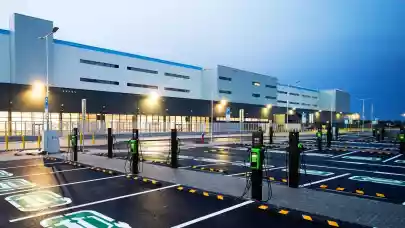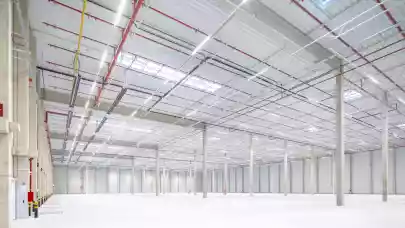
With the upcoming introduction of mandatory non-financial reporting, which will require companies to report on how they are performing in the areas of environment, employee relations and responsibility, and ethical working practices, industrial and logistics companies are taking a keener interest in sustainable solutions. This interest is then reflected in their demands for the properties on which they are based. Research by Colliers shows that the sustainability issue has so far been most commonly addressed by large multinationals, who expect properties to be equipped with sustainable technologies such as heat pumps, heat recovery units, energy-efficient smart lighting and photovoltaics. Experts from Colliers predict that interest in this topic will also increase next year but among smaller local companies.
We are entering an era of growing interest in sustainability in all areas of our lives. From individual activities such as waste sorting to political visions of energy self-sufficiency to commercial strategies - everything now revolves around ESG factors. It's no surprise then that even real estate tenants - industrial and logistics companies themselves - are taking an interest in this trend. "The growing emphasis on sustainability and ESG is particularly evident in large global companies. This commitment is naturally reflected in their local operations and property selection. When deciding on new premises, they carefully assess whether they will have a low carbon footprint and meet not only internal standards but also comply with current legislation. While the focus on ESG factors is not quite as pronounced for local companies, we expect this dynamic to change soon as more and more businesses integrate these aspects into their sustainability strategies," says Miroslav Kotek, Head of Industrial Real Estate at Colliers.
While in new modern buildings, the implementation of sustainable technologies is relatively easy and landlords themselves actively contribute with different ideas, older properties often present more complex challenges. Smaller or local landlords have not yet shown much willingness to invest in renovations. This puts tenants in a situation where they have to get personally involved in finding alternative solutions and possibly allocate their own funds to renovate and modernise existing buildings.
Higher initial costs but operational savings and improved corporate image
"Any measure taken to achieve greater sustainability comes with increased costs, which are ultimately borne by the tenants. They must therefore take this into account in their budgets. On the other hand, they save on operating costs in the medium and long term and expect that investments in sustainable technologies and efficient energy solutions will ultimately translate into financial savings," says Miroslav Kotek, adding that the customers of these tenants - large multinational companies that have sustainability firmly embedded in their strategies - also play an important role. Moreover, attention to current trends strengthens the image of a brand or company in the eyes of customers and the public.
Photovoltaics, heat pumps and transport accessibility
According to Panattoni, a range of measures can be implemented to promote the sustainability of industrial properties. They install photovoltaic power plants on the roofs of buildings. The latter not only provides energy independence but also contributes to renewable energy. Heat pumps are now practically standard, helping to minimise environmental impacts and carbon footprints and reduce energy consumption in buildings. A sophisticated Building Management System (BMS) is a key tool for efficiently optimising energy consumption and ensuring maximum comfort and safety for property users. Last but not least, their projects take into consideration water management, implementing modern technologies to reduce consumption and wastewater recycling.
"We are also exploring the impact on the site itself and its wider surroundings. For example, we are looking at environmental impact through biodiversity monitoring around our parks. Equally important are the facilities for staff. Modern canteens and a friendly environment that supports people’s well-being and building efficiency are part of our working spaces. We ensure good accessibility using various modes of transport, which not only increases work option flexibility but also reduces traffic and our ecological footprint," says Pavel Fojtík, Regional Sustainability Manager at Panattoni.
The current role model for industrial halls?
Independent organisations, institutions and certification systems assess how green buildings are. In many countries, the oldest and also very strict British BREEAM rating system is used. Its highest possible level - Outstanding - requires, as the name implies, excellent results in many categories, including energy efficiency, material usage, indoor environmental quality, and other aspects of sustainable construction. Few buildings can yet boast such a rating. A few weeks ago, the Amazon Robotics Centre in Panattoni Park Kojetín managed to do so. "With 187,000 sqm of floor space, it has become the largest industrial building in the Czech Republic with this rating. The building is not connected to gas. The building's consumption is largely covered by a photovoltaic power plant. Heat production (thermal energy) and cooling systems are provided by heat pumps and good building control by a BMS. The construction itself was also sustainable, using the nearby railway to transport the panels and reusing most of the construction waste from the original brownfield site," explains Pavel Fojtík.
Inevitable ESG reporting
From January 2024, some large companies will be required to provide regular information on progress towards their ESG objectives, i.e. environmental protection, fairness of relations with employees, and responsibility and ethical working practices. This obligation will gradually be extended to other companies. However, the driving force behind the demand for sustainable solutions tends to be the companies themselves. They have already integrated ESG objectives into their business strategies in recent years. As a key part of the supply chain, the manufacturing and logistics sectors are essential to achieving these goals.



